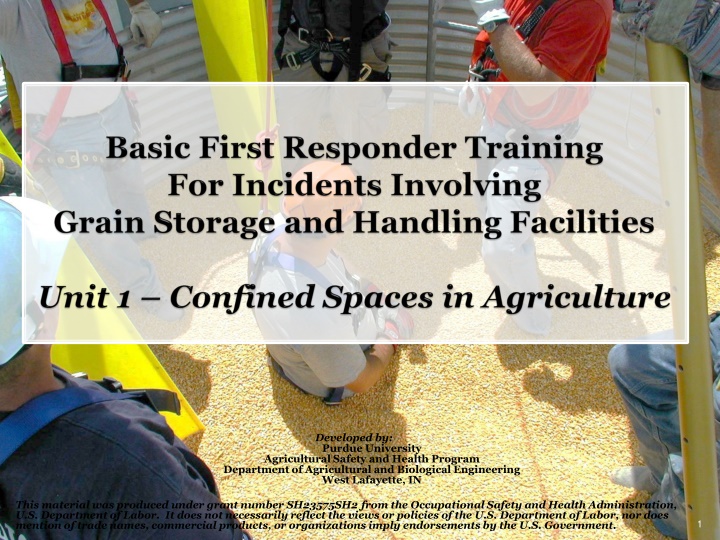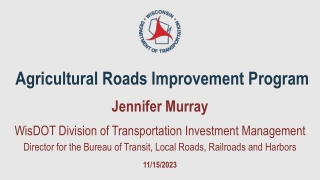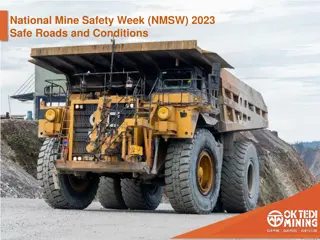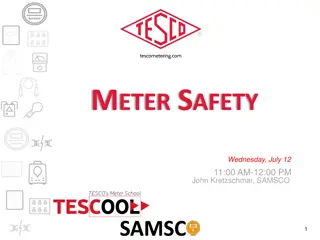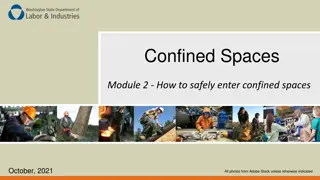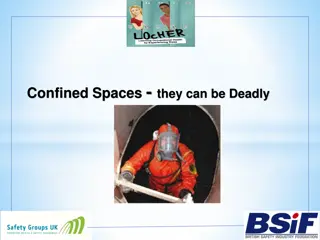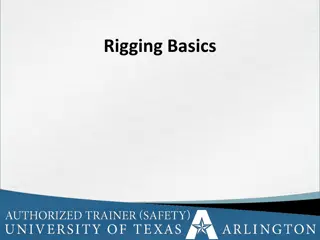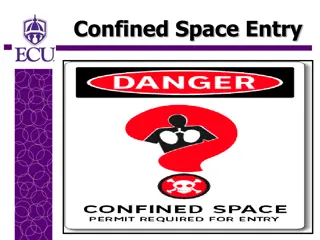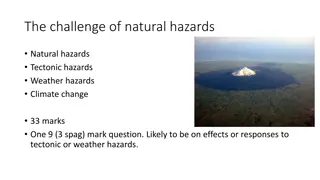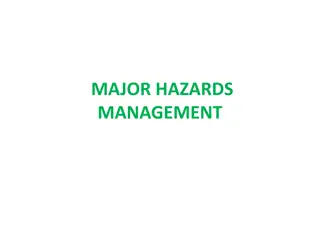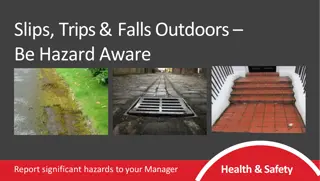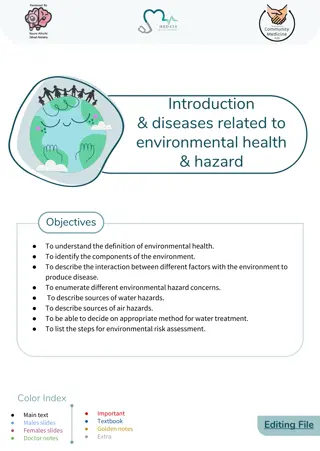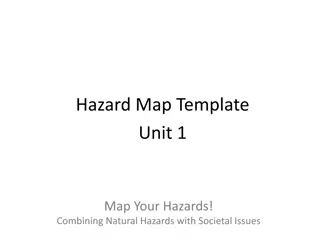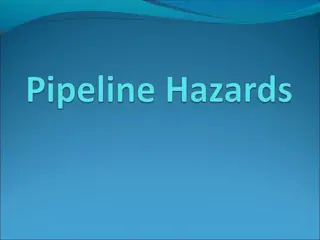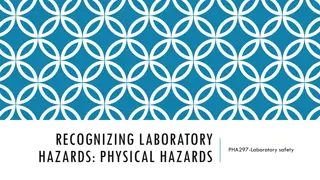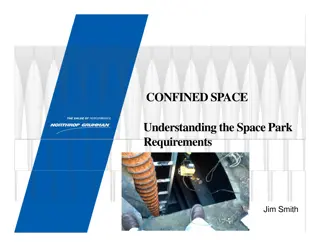Key Terms and Hazards in Agricultural Confined Spaces
Understand key terms, hazards, and safety standards related to agricultural confined spaces. Explore the types of confined spaces, such as grain bins, silos, and tanks, found in agricultural workplaces. Learn how to differentiate between OSHA exempt and non-exempt spaces and discover work practices to reduce risks in these environments.
Download Presentation

Please find below an Image/Link to download the presentation.
The content on the website is provided AS IS for your information and personal use only. It may not be sold, licensed, or shared on other websites without obtaining consent from the author.If you encounter any issues during the download, it is possible that the publisher has removed the file from their server.
You are allowed to download the files provided on this website for personal or commercial use, subject to the condition that they are used lawfully. All files are the property of their respective owners.
The content on the website is provided AS IS for your information and personal use only. It may not be sold, licensed, or shared on other websites without obtaining consent from the author.
E N D
Presentation Transcript
Developed by: Purdue University Agricultural Safety and Health Program Department of Agricultural and Biological Engineering West Lafayette, IN This material was produced under grant number SH23575SH2from the Occupational Safety and Health Administration, U.S. Department of Labor. It does not necessarily reflect the views or policies of the U.S. Department of Labor, nor does mention of trade names, commercial products, or organizations imply endorsements by the U.S. Government. 1
Identify key terms related to agricultural confined spaces Identify the typical types of confined spaces found in agricultural workplaces Identify the hazards related to agricultural confined spaces Review the Federal OSHA safety and health standards relevant to agricultural confined spaces Explain the difference between OSHA exempt and non- exempt confined spaces Identify work practices that reduce the risk of agricultural confined space-related emergencies 2
Any space found in an agricultural workplace that was not designed or intended as a regular workstation, has limited or restricted means of entry or exit, and has associated with it potential physical and/or toxic hazards to workers who intentionally or unintentionally enter the space. 3
A Confined Space: is large enough for an employee to enter fully and perform assigned work has a limited or restricted means of entry or exit is not designed for continuous employee occupancy 4
A Permit-Required Confined Space has one or more of the following: Contains or has the potential to contain a hazardous atmosphere Contains a material with the potential to engulf someone Has an internal configuration that might cause an entrant to be trapped or asphyxiated by inwardly converging walls or by a floor that slopes downward and tapers to a smaller cross section Contains any other recognized serious safety or health concerns 5
Examples: Grain bin Silo Manure storage facilities Hopper bottom feed bin Grain transport vehicle Septic tank Fertilizer storage tank Fermentation tank Other 6
Farm Grain Storage and Grain Leg Operation 7
Silos Concrete Poured Silo Oxygen-limiting silo Concrete Stave Silo 12
Flat Storage Outside Pile Flat Storage Building 13
Grain Carts Hopper Bottom Semi Portable grinder mixer Rail cars 14
In floor auger Portable grain auger Stirrator Sweep auger Belt Conveyor 15
Manure Storage Facilities Below ground pit Above ground storage tank Lagoon 16
Entrapments requiring extrication from flowable agricultural materials Engulfments fully buried in flowable agricultural material Entanglements in energized machinery Asphyxiation due to exposure to toxic environments Carbon Dioxide Methane Hydrogen Sulfide (manure) Ammonia (manure) Smoke/Carbon monoxide (fires) Silo gas Suffocation due to oxygen limited environments Falls Electrocutions Drowning Respiratory distress due to exposure to dust and microtoxins Burns from fires and explosions 1. 2. 3. 4. 5. 6. 7. 8. 9. 10. 17
29 CFR 1910.146 Permit-required confined space standard Exempts agriculture 29 CFR 1910.272 Grain handling standard Covers all commercial grain storage and handling operations Original focus on preventing grain dust explosions Exempts farms, feedlots, and certain seed processing operations Takes precedence over CFR 1910.146 18
Federal OSHA does not have enforcement jurisdiction over local government entities such as local fire departments Some OSHA State Plans cover emergency workers Prudent employers would preplan to assure that local emergency services have the needed equipment and trained personnel if relying on those services to conduct a rescue 19
Need for Emergency Action Plan Need for appropriate personal protective equipment Need for emergency response team Preplanning 20
The OSHA Grain Handling Standard (1910.272) currently exempts from compliance certain farming operations: Farms with 10 or fewer employed Feedlots Operations that prepare seeds for future crops The OSHA Permit-required Confined Spaces Standard (1910.146) generally exempts agricultural operations that: Grow or harvest crops Raise livestock or poultry 21
Over half of all grain storage capacity in the U.S. is currently exempt from OSHA compliance. Historically, about 70% of all documented grain-related entrapments have occurred at exempt facilities. Exempt facilities are less prepared to respond to an emergency due to: Fewer trained personnel Less access to rescue equipment Workplace safety rules not in place No emergency management plan 22
Confined space entry permit system Appropriate confined space entry equipment Lifeline and harnesses Air monitoring equipment Communication system Emergency action plan Documented training Incident reporting policies in place 23
Both volunteer and paid responders should comply with OSHA standards where applicable, regardless of OSHA jurisdiction Volunteer responders to exempt facilities should still follow all applicable OSHA confined space rules Volunteer emergency first responders may not be considered public sector employees under OSHA provisions Paid responders to non-exempt facilities may not be covered by OSHA Confined Space Rules, but should comply Provisions are provided in the regulations for a timely response Responding agencies should develop an SOP for responses 24
Every worker deserves a safe and healthy workplace and the opportunity to go home at the end of the day. The priority at grain storage and handling facilities should be on preventing situations that require an emergency response. Emergency first responders should not be expected to fix a problem that should have been prevented. 26
Develop a culture of safety and health It starts at the top Involves everyone Is clearly communicated Identify hazards/threats Conduct assessments Encourage reporting of hazards Train workers to identify hazards Remove or isolate hazards Guards, railings Use appropriate personal protective equipment 27
Workers are entitled to working conditions that do not pose a risk of serious harm. To help assure a safe and healthful workplace, OSHA also provides workers with the right to: Ask OSHA to inspect their workplace; Use their rights under the law without retaliation and discrimination; Receive information and training about hazards, methods to prevent harm, and the OSHA standards that apply to their workplace. The training must be in a language you can understand; Get copies of test results done to find hazards in the workplace; Review records of work-related injuries and illnesses; Get copies of their medical records; For more information, visit the OSHA.gov website. 28
You have these options to file your safety and health complaint: Online www.OSHA.gov Download compliant form* [En Espanol*] Telephone Office. OSHA staff can discuss your complaint and respond to any questions you have. If is an emergency or the hazard is immediately life Area Office or Online - Go to the Online Complaint Form at Download and Fax/Mail and Fax/Mail - Download the OSHA Telephone - your local OSHA Regional or Area If there there is an emergency or the hazard is immediately life- -threatening, call your local Area Office or 1 1- -800 threatening, call your local OSHA Regional or 800- -321 OSHA Regional or OSHA. 321- -OSHA. 29
